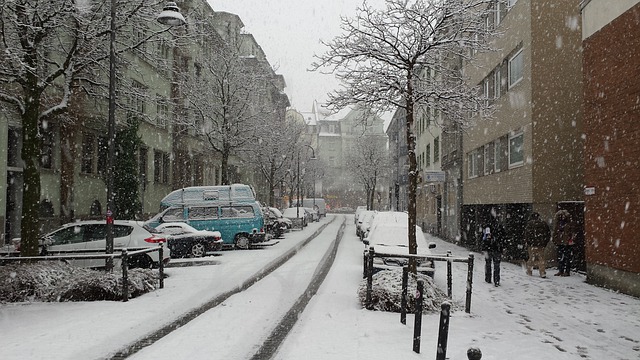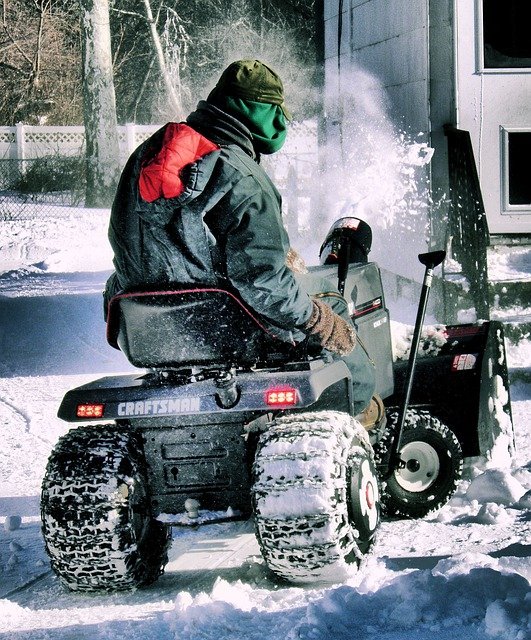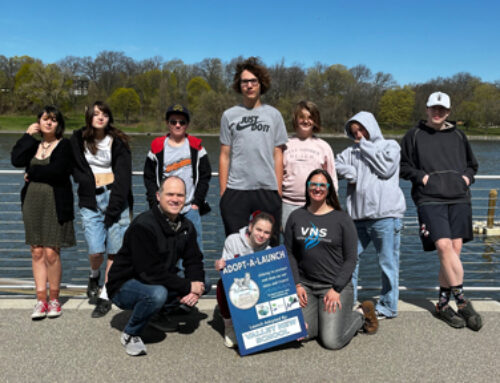Anyone living in a snowy state, such as here in Wisconsin, knows the importance of proper ice and snow removal for safety reason. Seasonal management of snow and ice on large, impervious surfaces are also contributing to salt and sediment pollution to freshwater resources. However, applying Best Management Practices (BMP) to winter parking lot and sidewalk maintenance will affect environmental health and your pocket book!

The Basics:
What are Best Management Practices (BMP)? BMP are, “ways to manage your land and activities to mitigate pollution of surface and groundwater near you. These practices are usually simple and low tech, and benefit your household and land in many ways.” It is something everyone from individuals, business, owners, cities, states, and more can do.
What are the BMP for ice and snow control at a glance?
- Store snow away from storm drains, ditches, ponds, creeks, and wetlands
- Store salt and sands indoors on an impervious surface
- Utilize proper equipment and inspect to ensure it is functioning as expected
- Remove snow early and often to reduce the amount of compaction and need for ice removal
- Understand the products you are using:
- Sand provides traction. It does not melt ice!
- Salt is only effective when the air temperature is warmer than the pavement temperature. Also, a little goes a LONG way under the correct conditions.
- Follow manufacturer application rates
Runoff and Municipal Storm Sewer Systems
Runoff is created from precipitation, including from rain or snowmelt, that cannot infiltrate into the ground. The runoff moves across the surface of the land, especially those that are impermeable like sidewalks, parking lots, and roads. Pollutants such as sand, salt, vehicle chemicals, and more are carried in this water. The water can lead directly into local water bodies. However, they can also lead to ditches, catch basins, or sewer systems that then release the water into nearby surface waters. Runoff issues are exasperated in winter due to the frozen ground. Frozen grounds have low infiltration rates and increase runoff. The risks of water pollution is greatly increased during this time. Unlike pollutants like trash, sand and salt are permanent pollution and cannot simply be removed.
Chloride and abrasive pollution
Once you apply snow and ice melting compounds, such as salt and sand, they become a permanent pollutant. They pollute nearby soils and also dissolve in water through runoff or infiltration, thus contaminating surface and ground water resources. Sand and other abrasives end up in storm drains and cause over sedimentation of local waterbodies. Excess salt impacts soil by causing vegetation die offs, soil erosion, and soil compaction.
What Can You Do?
The good news is that you can help be part of the solution! Following BMP decrease these pollution risks. You can also plan ahead of time to help prevent these pollutants.
Planning

Before winter comes around you can create a list of actions to take before, during, and after winter precipitation. This gives you the ability to tailor your plans to specific locations. All areas are different, but the principles and practices are the same. Make sure to follow and update your plan as needed.
Use the right equipment
Not all areas need heavy machinery to clear snow. Larger scale areas may utilize more equipment to better plan. Some equipment that may be useful includes:
- Pavement sensors – these test the surface temperature and can help determine if you should use salt
- Adjustable equipment – the same amount of salt or sand is not always needed. Equipment that can adjust or lower application rates help to decrease the risk of pollutant
- Outfit vehicles with ground speed controls to allow application rates based on vehicle speeds
- Properly calibrate applicators to manufacturer’s recommendations based on materials to be applied.
Before applying salt or sand know this!
Taking simple steps, such as monitoring the weather can help you determine what you may need to use or do. De-icing substance, whether solid or liquid, have different properties.
Chlorides:
- Sodium Chloride (Road Salt) is ineffective below 15°F
- Calcium Chloride is ineffective below -20°F
- Magnesium Chloride (liquid) is ineffective below -10°F
- Potassium Chloride is ineffective below 25°F
Sand (Traction Control)
Sand should be used when temperatures are too cold for de-icing chemicals. However, appropriate application is still necessary since it can increase sediments in runoff.

This may seem to be a daunting task however it can be simplified into two easy steps that you probably already do!
- Monitor the weather: Knowing and understanding the current and future weather patters and temperatures will help you decide what equipment and products to utilize.
- Know the surface temperature: The temperature of the surface is different than the air temperature. Knowing this will help you determine what type of materials and rates to use.
Additionally, you can utilize anti-icing strategies (liquids) prior to winter precipitation to prevent snow and ice bonding to the surface. A salt brine can be used before the storm to prevent snow and ice from bonding to surface. This can be effective for several days depending on weather conditions. This options is both cost-effective and safer on the environment. It requires 25% of the material and is 1/10th the cost of de-icing.
Sidewalk Tips
- Hand-apply deicer or sidewalk salt.
- Do not use more than needed, apply to manufacturer’s recommendations.
- Drop spreaders keep materials from spreading onto adjacent landscaping.
- Manually removing snow aggressively will reduce the amount of deicer needed.
- Proper application, 3 in between granules, will effectively do the job!
Checking for local events or workshops can help you plan for season appropriately and educate you more about the impacts of ice and snow removal. Check out and register for our local event near you-
2022 Winter Parking Lot Workshop
Questions? Comments? Contact Alyssa Reinke, the NEWSC Coordinator at (920) 851-4336 or alyssa@fwwa.org!





